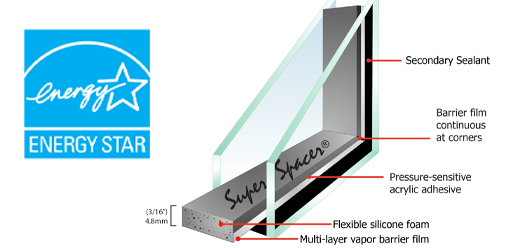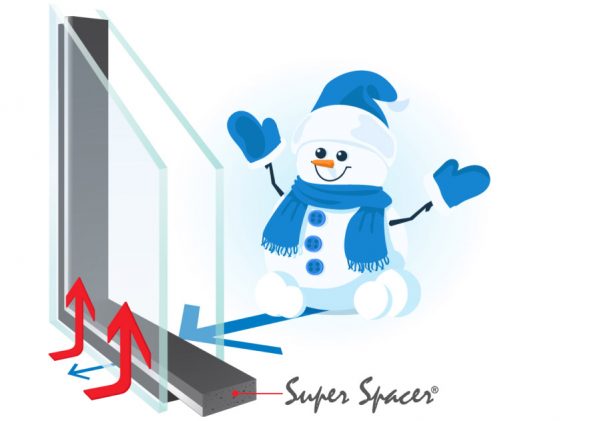What is Condensation and What Can I Do About It?
Especially during the first real cold snap of an approaching winter season, we typically field quite a few phone calls with questions regarding condensation on the interior surface of windows.
Condensation is a natural occurrence on all windows and is caused by excess humidity, or invisible water vapour, present in the air. When this water vapour comes in contact with a surface which is at a cooler temperature, the vapour turns to visible droplets of moisture. Window condensation can lead to mold that increases the likelihood of allergens, including fungi, viruses and mites that might cause respiratory infections, allergies and asthma.
Vinylbilt windows use the Edgetch Super Spacer, otherwise known as a warm edge spacer. This combined with Cardinal’s superior Argon gas & LoE coated glass units results in windows with a higher surface temperature, greatly reducing the likelihood of condensation. Our insulating glass units provide superior energy efficiency to reduce the potential for condensation. However, there is no such thing as a condensation-free window in high humidity conditions. Controlling the amount of moisture in your home is the most effective action you can take to avoid condensation
Prevention
Techniques
Energy-efficient windows are least likely to have condensation.
- Use fans in bathrooms, kitchens and laundry rooms to circulate the air.
- Air out your home frequently by opening doors and windows.
- Reduce the number of indoor house plants, as plants increase humidity levels.
- Use a dehumidifier to remove excess humidity from the air.
- Install energy-efficient windows.
- If you have a humidifier or dehumidistat, set to the correct outside temperature settings.
- Make sure you have adequate ventilation through soffits, roof ridge, basement and crawl space.
Relative Humidity Moisture levels must be controlled within your home. The following settings are a good guideline.
Outside Air Temperature/Inside Humidity Setting
• Summer Temp 50%
• 0 to –12C 40%
• -12 to –18C 35%
• -19 to –24C 25%
• -25 to –30C 20%
• -31C or below 15%
How Does Super Spacer Technology Work?
Because there are no metals used in the construction of Super Spacer window spacers, conductivity is eliminated. This means that the insulating properties of the window are maximized, keeping the temperature of your window edges consistently warmer (up to 10.2 degrees warmer). While many other window manufactures claim to provide this “warm edge technology”, they often feature highly conductive metal-based glass spacers. Windows that include metal-based spacers can lose up to 50% of the overall R-value, allowing hot and cold to freely flow through the window seals. With Super Spacer, however, the R-value a window is better maintained.

